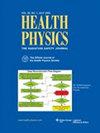A Review of Recent Low-dose Research and Recommendations for Moving Forward.
IF 1.4
4区 医学
Q4 ENVIRONMENTAL SCIENCES
引用次数: 0
Abstract
The linear no-threshold (LNT) model has been the regulatory "law of the land" for decades. Despite the long-standing use of LNT, there is significant ongoing scientific disagreement on the applicability of LNT to low-dose radiation risk. A review of the low-dose risk literature of the last 10 y does not provide a clear answer, but rather the body of literature seems to be split between LNT, non-linear risk functions (e.g., supra- or sub-linear), and hormetic models. Furthermore, recent studies have started to explore whether radiation can play a role in the development of several non-cancer effects, such as heart disease, Parkinson's disease, and diabetes, the mechanisms of which are still being explored. Based on this review, there is insufficient evidence to replace LNT as the regulatory model despite the fact that it contributes to public radiophobia, unpreparedness in radiation emergency response, and extreme cleanup costs both following radiological or nuclear incidents and for routine decommissioning of nuclear power plants. Rather, additional research is needed to further understand the implications of low doses of radiation. The authors present an approach to meaningfully contribute to the science of low-dose research that incorporates machine learning and Edisonian approaches to data analysis.近期低剂量研究综述及未来发展建议。
几十年来,线性无阈值(LNT)模型一直是监管的 "法律"。尽管 LNT 的使用由来已久,但在 LNT 是否适用于低剂量辐射风险的问题上,科学界一直存在重大分歧。对过去 10 年低剂量风险文献的回顾并没有给出明确的答案,相反,文献似乎在 LNT、非线性风险函数(如超线性或亚线性)和激素模型之间存在分歧。此外,最近的研究已开始探讨辐射是否会对心脏病、帕金森氏症和糖尿病等几种非癌症影响的发展产生作用,其机制仍在探索之中。根据上述综述,尽管 LNT 导致了公众的辐射恐惧症、辐射应急准备不足以及辐射或核事故发生后和核电站常规退役时的极高清理成本,但目前还没有足够的证据来取代 LNT 作为监管模式。相反,需要开展更多的研究,以进一步了解低剂量辐射的影响。作者提出了一种方法,结合机器学习和爱迪生数据分析方法,为低剂量研究科学做出有意义的贡献。
本文章由计算机程序翻译,如有差异,请以英文原文为准。
求助全文
约1分钟内获得全文
求助全文
来源期刊

Health physics
医学-公共卫生、环境卫生与职业卫生
CiteScore
4.20
自引率
0.00%
发文量
324
审稿时长
3-8 weeks
期刊介绍:
Health Physics, first published in 1958, provides the latest research to a wide variety of radiation safety professionals including health physicists, nuclear chemists, medical physicists, and radiation safety officers with interests in nuclear and radiation science. The Journal allows professionals in these and other disciplines in science and engineering to stay on the cutting edge of scientific and technological advances in the field of radiation safety. The Journal publishes original papers, technical notes, articles on advances in practical applications, editorials, and correspondence. Journal articles report on the latest findings in theoretical, practical, and applied disciplines of epidemiology and radiation effects, radiation biology and radiation science, radiation ecology, and related fields.
 求助内容:
求助内容: 应助结果提醒方式:
应助结果提醒方式:


